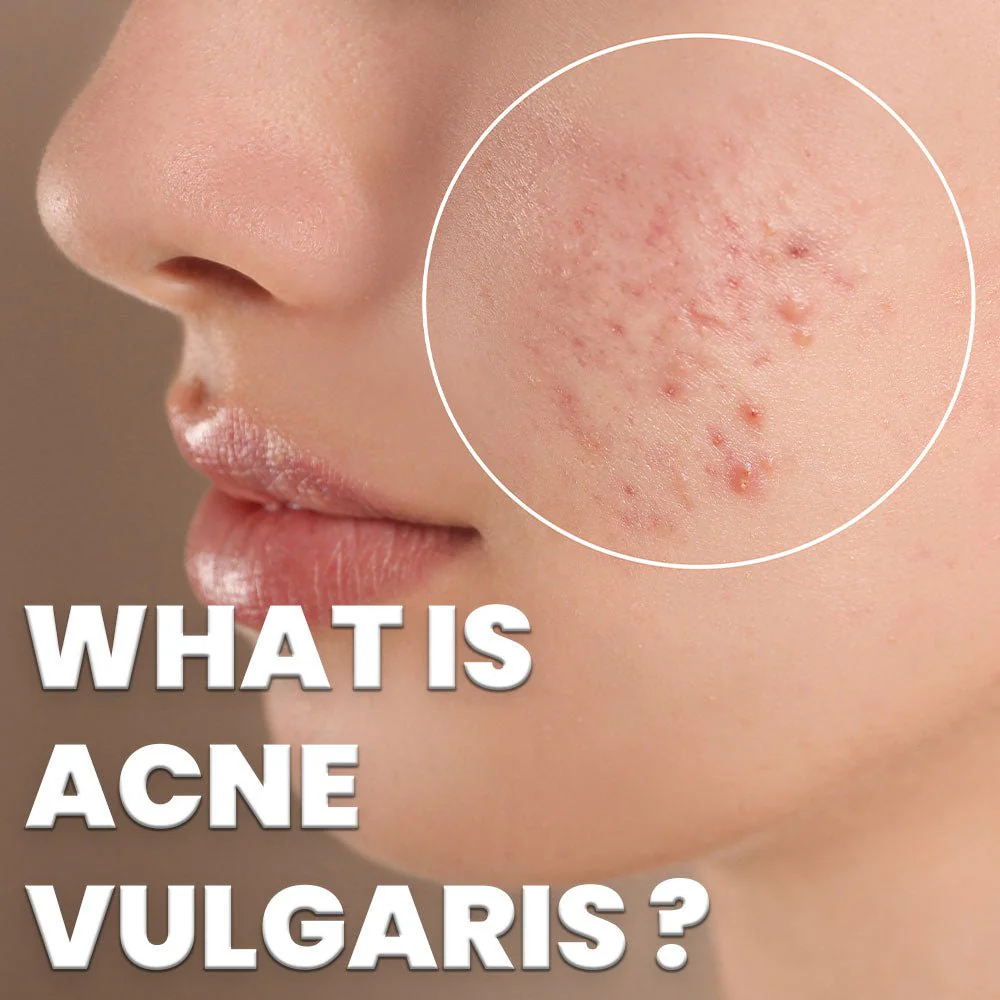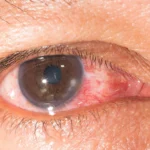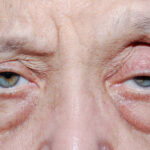Acne vulgaris, commonly known as acne, is a prevalent skin condition affecting millions worldwide. This guide delves into its causes, symptoms, and effective treatment options, providing a thorough understanding to help patients and healthcare providers manage and prevent acne breakouts.

What is Acne Vulgaris?
Acne vulgaris is a chronic inflammatory condition of the pilosebaceous units (hair follicles and sebaceous glands). It predominantly occurs on the face, back, chest, and shoulders. While commonly associated with adolescence, it can affect individuals of all ages, often leading to physical and emotional distress.
Causes of Acne Vulgaris
1. Excess Sebum Production
Sebaceous glands produce an oily substance called sebum. Overproduction of sebum can clog hair follicles, creating an environment conducive to bacterial growth.
2. Follicular Hyperkeratinization
Excessive shedding of dead skin cells can block follicles, contributing to comedone (blackhead and whitehead) formation.
3. Bacterial Proliferation
The growth of Cutibacterium acnes (formerly Propionibacterium acnes), a bacteria naturally present on the skin, plays a key role in inflammation and acne development.
4. Hormonal Changes
Androgens, hormones that increase during puberty, can stimulate sebaceous glands. Hormonal fluctuations during menstruation, pregnancy, or due to conditions like PCOS can also exacerbate acne.
5. Lifestyle and Environmental Factors
- High glycemic index diets
- Stress
- Use of certain cosmetics and skincare products
- Excessive sweating or wearing occlusive clothing
Symptoms of Acne Vulgaris
Mild Acne
- Blackheads (open comedones)
- Whiteheads (closed comedones)
Moderate Acne
- Papules: Small, red, raised bumps
- Pustules: Pimples containing pus
Severe Acne
- Nodules: Large, painful lumps beneath the skin
- Cysts: Deep, pus-filled lesions that may scar
Treatment Options for Acne Vulgaris
1. Topical Treatments
Retinoids
- Help reduce follicular plugging and inflammation.
- Common options: Tretinoin, Adapalene, Tazarotene.
Benzoyl Peroxide
- Reduces bacterial load and prevents antibiotic resistance when used with other treatments.
Salicylic Acid
- Promotes exfoliation, unclogging pores.
Topical Antibiotics
- Clindamycin and erythromycin target bacterial growth.
2. Oral Medications
Oral Antibiotics
- Tetracyclines (doxycycline, minocycline) reduce inflammation and bacterial proliferation.
Hormonal Therapy
- Combination oral contraceptives or anti-androgens like spironolactone help regulate hormonal activity.
Isotretinoin
- A powerful option for severe or resistant acne, reducing sebum production and inflammation.
3. Physical and Cosmetic Procedures
Chemical Peels
- Help improve texture and reduce comedones.
Light and Laser Therapies
- Target C. acnes and reduce inflammation.
Extraction Procedures
- Manual removal of comedones by dermatologists.
Preventive Strategies for Acne Vulgaris
- Skincare Routine: Use non-comedogenic, gentle cleansers and moisturizers.
- Dietary Adjustments: Avoid high-glycemic foods and dairy, which may worsen acne.
- Stress Management: Incorporate relaxation techniques like meditation and exercise.
- Sun Protection: Use broad-spectrum, non-comedogenic sunscreens to prevent post-inflammatory hyperpigmentation.
Emotional and Social Impact of Acne Vulgaris
Acne vulgaris often leads to self-esteem issues, anxiety, and depression. Addressing these psychosocial effects is crucial to holistic treatment. Support groups, counseling, and empathetic healthcare interactions can help patients cope with the emotional burden.
Managing acne vulgaris requires a tailored approach combining lifestyle changes, pharmacologic treatments, and preventive measures. Early intervention and adherence to a treatment plan are essential for minimizing acne severity and preventing scarring.

